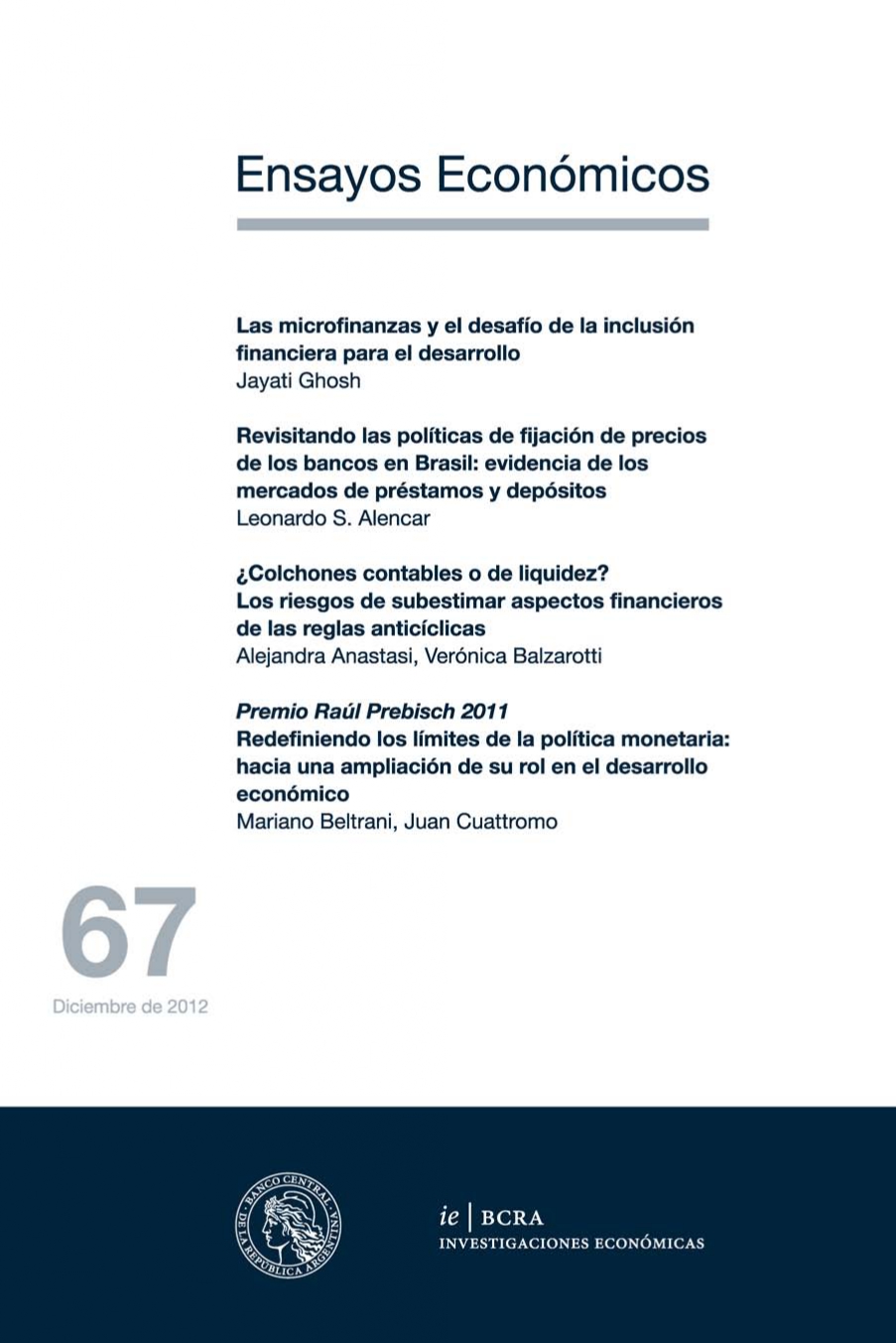Accounting or Liquidity Buffers? The Risks of Overlooking Financial Aspects of Countercyclical Rules
Keywords:
Banking System, Bank Loans, Counter-Cyclical Regulation, ProcyclicalityAbstract
The impact of the business cycle on banks’ internally generated cash flows is an important driver in the pro-cyclical dynamics of the traditional banking business. This issue has been understated in the discussion on counter-cyclical regulations. Considerable attention has been given to the need to lessen capital scarcity during the downturns and to the discrepancy between accounting rules and regulation standpoints. In contrast, the importance of incentives arising from this type of regulations has received little attention. We develop an exercise of a representative bank to illustrate the dynamic effects of some counter-cyclical regulatory schemes, with a special focus on the impact on cash flows. We show that while a counter-cyclical provisioning scheme changes the temporal impact of the cycle on accounting earnings, it may still stress cyclicality. Alternative counter-cyclical regulatory schemes such as time-varying capital and liquidity requirements are also assessed. Besides the above mentioned impact on cash flows, we observe other potential drawbacks associated with the interplay among accounting rules, signaling (the banking business is subject to agency and asymmetric information problems) and incentives to “manage the balance sheet” (to take advantage of the valuation differences between the regulated and the non-regulated segments).
JEL classification: E32 ; G21 ; G28




